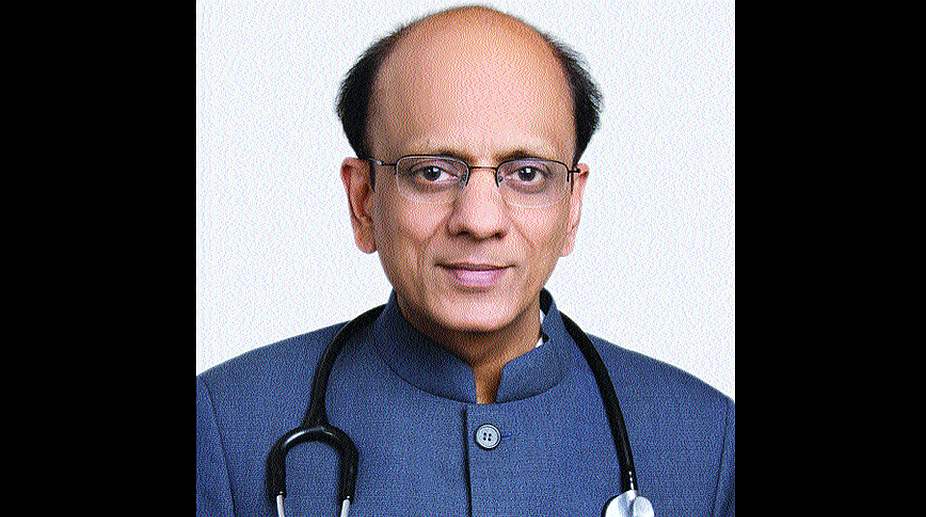Indian Medical Association (IMA) president K K Aggarwal has welcomed the government’s move to reduce prices of stents and mandate prescribing of generic drugs for the benefit of the public. However, he has raised the apprehension that hospitals might raise the prices of disposable materials used in angioplasty to maintain their profit margin. Dr Aggarwal, who is also president of the Heart Care Foundation of India, said in an interview that the government must initiate proper monitoring.
Q: The government’s putting a cap on stent prices has left patients happy but the industry is upset. What is your view?
A: Latest government announcements setting a price slab on different types of the device are more than welcome. The cut in price of stents makes angioplasty more accessible. The National Pharmaceutical Pricing Authority (NPPA) recently fixed the price of bare metal stents at Rs 7,260 as against Rs 45,000 previously and of most used drug-eluting stents at Rs 29,600 as against Rs 80,000 to Rs 175,000. Both imported and domestic stents will cost the same. This move has not only been cheered by patients but is also appreciated by the majority of healthcare industry players. However, a few remain dissatisfied.
Q: Will fourth generation hi-tech stents also cost less?
A: A health committee, comprising top cardiologists and scientific advisors decided to fix prices of stents for all generations. But breakthrough technology-based stents will not be a part of this price fixing. The issue needs to be taken up for discussion.
Q: Will the low cost of stents stop research into better stents?
A: No. If a manufacturer comes out with an advanced stent that is more expensive, they can write to the government for consideration of relaxing the cap. If any product falls under the National List of Essential Medicines, it needs to be regulated. Stents have been included in it now.
Q: Are low cost stents qualitatively poor?
A: No. Whether made in India or imported, as long as they are approved by Drugs Controller General of India (DCGI), they are okay. Drug-eluting metallic stents are of choice, though bare metal stents are still useful in selected situations. Currently, there is no definite superiority among currently available metallic drug-eluting stents in terms of mortality outcome.
Q: What is your view on the controversy surrounding stents?
A: Food is the medicine. It’s the duty of the government that nobody dies hungry. There are two types of food available in the market ~ ration and non-ration. Wheat, rice, pulses, seasonal vegetables form ration and are available at low cost. But if you want maida and suji which are not essential but luxury items, then you have to pay extra. For a common man atta is available at reasonable price. Rice too is available but if I want basmati, then I have to pay extra. Milk is available at ration price but if you want paneer, it is available at extra money. So luxury costs more money. Another example is a phone or a car. A basic model costs less which serves the purpose functionally. But higher versions would cost a lot like a smartphone or a super luxury Mercedes.
Thus, the government has to ensure that essentials, including drugs are available at reasonable prices, even if a subsidy has to be given. These drugs, available as ration are called National List of Essential Medicines (NLEM). These are of good quality. But if we want luxury, say you want less bitter drugs that should act within one minute instead of half-an-hour, flavoured, or combination medicines so that one takes less medicine, it will be non-NLEM. NLEMs take care of 90 per cent of the people but for the two per cent who can cough up more money and want chewable tablets, there are modification drugs. People should know that NLEMs are good drugs, take care of basic problems and are of good quality.
Stents, too, have been put in NLEM. Thus they have become cheaper. Basic stents are in NLEM. But those with modifications are in non-NLEM and still cost more.
Q: So, what should one go for?
A: For an average man, NLEM would suffice. CGHS would not reimburse non-NLEM if NLEM is available. So, where is the controversy? As far as quality or safety is concerned, there is no difference between the two.
Q: Rumours were doing the rounds that cardiologists were keeping the prices high?
A: Well if there is no government regulation; there is no price control; no MRP, then anyone can charge anything. IMA has been asking the government to provide NLEMs drugs or devices free of cost for acute heart attacks to a person who cannot afford even NLEM stents in acute emergency so that nobody dies for want of a drug or device.
Q: Why was this decision taken so late? Why didn’t earlier governments do so?
A: Ask those previous governments. Now stents are within everybody’s reach, earlier they were not. It should have been done 10 years back. All drugs and devices must come in NLEM and all doctors must prescribe only NLEM drugs. IMA feels that medicine should not eat away the budget of the household.











